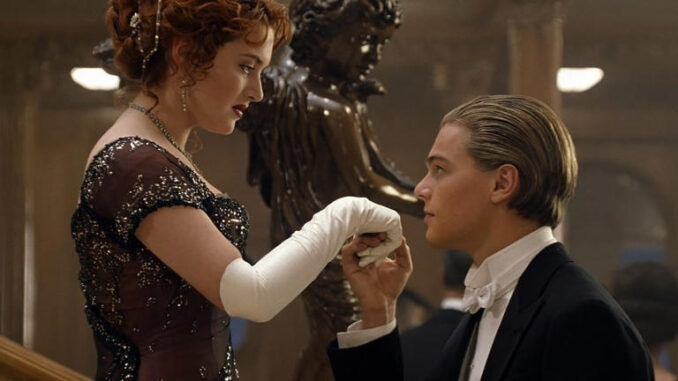
The Unsinkable Hope: Why Fans Think Leonardo DiCaprio's Titanic 2: The Return of Jack Is Real
The grand, tragic saga of the RMS Titanic, immortalized on screen by James Cameron, etched itself into the collective consciousness not just as a historical retelling, but as a defining cinematic love story. At its heart lay Jack Dawson, Leonardo DiCaprio's spirited, doomed artist, whose demise on that icy night became a cultural touchstone of heartbreaking sacrifice. Yet, despite the definitive nature of his death, an almost mythical belief persists among a segment of fans: that a sequel, Titanic 2: The Return of Jack, starring DiCaprio, is not just a dream, but a lurking reality. This enduring conviction is not born of cinematic leaks or official announcements, but from a potent, swirling brew of wish fulfillment, the persuasive power of online misinformation, and a fundamental misunderstanding of the blurred lines between fervent fandom and objective fact.
At its core, the yearning for Jack's return is a testament to the original film's emotional resonance and the sheer charisma of Leonardo DiCaprio. For millions, Jack Dawson wasn't just a character; he was a symbol of first love, reckless abandon, and noble sacrifice. His death, an iconic moment of cinematic tragedy, left an open wound in the hearts of viewers. The endless "he could have fit on the door" debates, the passionate arguments over Rose's perceived selfishness, and the widespread fan fiction that reimagines his survival are not just idle musings; they are expressions of an unfulfilled emotional contract. Fans, having invested deeply in this idealized romance, instinctively desire a different ending, a chance to undo the tragedy. The very idea of Titanic 2: The Return of Jack offers a tantalizing promise: the chance to rewrite history, to reunite the star-crossed lovers, and to grant Jack the happy ending he was so cruelly denied. DiCaprio's enduring global superstardom further fuels this fantasy; as long as he is a prominent figure, the ghost of Jack Dawson, intertwined with his image, remains eternally viable for a resurrection.
Compounding this emotional yearning is the sprawling, often untamed landscape of the internet, a fertile ground for the propagation of both genuine news and elaborate hoaxes. Social media platforms, with their frictionless sharing mechanisms, are a primary conduit for the spread of this fictional sequel. Imagine a meticulously crafted fake movie poster, perhaps featuring a slightly older, perhaps more haunted Jack, his eyes still holding that familiar sparkle, superimposed over a stormy sea or a rebuilt ship. This image, possibly accompanied by a clickbait headline like "DiCaprio Confirms Secret Titanic Sequel!" or "Jack Dawson's Miraculous Return: The Untold Story," can go viral within hours. Users, often seeing the headline and a compelling visual, but neglecting to verify the source, share it widely, turning a speculative fan fantasy into a perceived fact. The rise of sophisticated AI tools capable of generating eerily realistic images and even deepfake videos has further muddled the waters, allowing for the creation of convincing "trailers" or "interviews" that, to the untrained eye, lend a startling air of authenticity to the most outlandish claims.
Finally, the belief in Titanic 2: The Return of Jack underscores a broader challenge in modern media consumption: the blurring of reality and fiction, particularly when it comes to beloved narratives. For devoted fans, the fictional world of Titanic holds a potent reality; the characters, their struggles, and their triumphs feel profoundly real. This deep immersion can lead to a suspension of disbelief that extends beyond the theatre, making the possibility of continuity, even one as improbable as a return from icy depths, seem plausible. Moreover, Hollywood's own track record of endless reboots, sequels, and cinematic universes contributes to this mindset. If franchises like Star Wars or Jurassic Park can resurrect characters decades later, why not Jack Dawson? This cynical, yet understandable, view of the entertainment industry as perpetually seeking to capitalize on established intellectual property unwittingly lends credence to the Titanic 2 myth. The very act of discussing it, even to debunk it, keeps the idea alive, cementing its place in the popular imagination as a tantalizing "what if."
In conclusion, the stubborn persistence of the Titanic 2: The Return of Jack myth is a fascinating case study in the intersection of powerful fandom, digital misinformation, and the human desire for narrative closure. It’s an illustrative example of how deeply we invest in fictional lives, how easily our hopes can be manipulated by online currents, and how the boundaries between the silver screen and our deepest desires can become profoundly permeable. While Leonardo DiCaprio is highly unlikely to ever reprise his role as a resurrected Jack Dawson, the "Titanic 2" truly exists – not as a film, but as an unsinkable hope, a testament to the enduring power of a story that, even in its tragedy, continues to inspire an unwavering, if unrealistic, belief in second chances.
